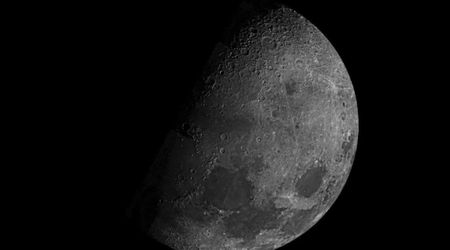Planet in Opposition Meaning

In the solar system, celestial bodies are constantly on the move, engaged in an intricate dance dictated by the laws of physics. Every so often, our views of the planets are clear and sharp—lit by the light of the sun, these distant worlds seem to demand our attention.
Amidst this celestial ballet, certain stellar events stand out, captivating the attention of both professional astronomers and sky-gazing enthusiasts alike. One such fascinating event is when a planet is in 'opposition'. You may have come across this term in astronomy magazines or perhaps your astronomy application sent you a notification about it
After reading this article you'll know exactly what opposition means and why it's a key feature on every stargazer's calendar!
Opposition explained
Picture yourself gazing up at the star-freckled sky on a clear night. The cosmos unfolds before your eyes, twinkling in all its celestial glory.
Among the stars, a luminous entity shines brighter than the rest, commanding your attention. This standout performer is a planet, at the peak of its brilliance, engaged in a cosmic event called 'opposition'.
So let's break it down!
You know how we have day and night? That happens because our Earth spins on its axis, and the part of Earth facing the Sun gets daylight while the part facing away gets nighttime. Now, think about how our Earth and the other planets are also moving around the Sun in their own orbits.
Now, sometimes, as we're all moving around, the Earth and another planet line up so that they're on the exact same sides of the Sun. Like, if you imagine the Sun as the start of a straight line, Earth would be in the middle of the line and the other planet is on the end of that line. That's what astronomers call "opposition".
Why is this cool? Well, it means that from our point of view on Earth, the planet at opposition is fully lit by the Sun, just like how the Moon looks fully lit when it's full. And because the planet is also really close to us at this point, it looks super bright in the sky. It's like, the best time to get a good look at it, either with a telescope or sometimes even with just your eyes.
Also, because the planet is at the closest point to us in its orbit, it's the best time to launch space missions to that planet. So it's a really important concept for stargazers and space agencies alike.

Why are these events such a key feature on every stargazer's calendar?
As mentioned before, planet observers loves planetary oppositions because they represent the best opportunities to witness and admire celestial bodies in their full glory. Here’s why:
- They are much more bright: During opposition, a planet is shining at its brightest in the sky because it's at its closest position to Earth in its orbit and it is fully illuminated by the Sun from our perspective. This means even the distant outer planets like Jupiter or Saturn can be seen with the naked eye, appearing as bright, star-like (but not twinkling as much) points of light.
- They are visible for much longer: Planets in opposition are visible for most of the night. They rise around sunset, reach their highest point in the sky around midnight, and set around sunrise. So, there's a wide window for viewing.
- More light means more details in the eyepiece: For those with telescopes or stargazing binoculars, the opposition is the best time to observe a planet. Since they are so much brighter than normal, your telescope will be collecting a higher quantity of photons which translate in a much more detailed view. You can often see details like the cloud bands on Jupiter, the great read spot, the rings of Saturn and its moons, or the polar ice caps on Mars.
- They are more predictable: As opposed to rare naked-eye comets that show up randomly, oppositions happen at predictable intervals based on the planet's orbits, so you can plan far in advance for these events.
- The best opportunity to dabble in astrophotography: For astrophotographers, opposition provides the best opportunity to capture detailed images of planets. If you your social media is rather a space themed, you should notice an abundance of planetary pictures flourishing all over your feeds on IG, FB and Twitter around the time of opposition.

When is the next opposition taking place?
If you have a stargazing app installed on your phone, chances are that it will send you a notification whenever an opposition is about to start. Additionally, online newspapers tend to cover those events so you should definitely come across some headlines on google news, discovery or wherever you keep up with global news.
That being said, here are the next opposition dates for each planet:
- Mars: Wednesday, 15th January 2025 at 18:32 PST / 02:32 UTC
- Jupiter: Thursday, 2nd November 2023 at 21:55 PDT / 04:55 UTC
- Saturn: Sunday, 27 August 2023 at 01:20 PDT / 08:20 UTC
- Uranus: Monday, November 13, 2023, at 09:12 PST / 17:12 UTC
- Neptune: Tuesday, the 19th of September 2023, at 04:09 PDT / 11:09 UTC
- Pluto: Saturday, July 22, 2023, at 05:23 PDT / 12:23 UTC
Related Reading: Upcoming Planetary Opposition: The Next Best Time to View the Planets

The Frequency of Planetary Oppositions
The frequency of opposition for each planet depends on its orbital period around the Sun, here’s an approximate interval between each opposition for each planet:
- Mercury and Venus: These inner planets do not have oppositions, because they orbit between the Sun and Earth. If you were living on Venus, Earth would have oppositions from your perspective!
- Mars: Approximately every 26 months.
- Jupiter: Approximately every 13 months.
- Saturn: Approximately every 12.5 months.
- Uranus: Approximately every 369 days.
- Neptune: Approximately every 367 days.
- Pluto: Approximately every 366.7 days. (we love Pluto)
Frequently Asked Questions
Can a planetary opposition be observed from any location on Earth?
Planetary oppositions can generally be observed from any location on Earth where the opposed planet would be above the horizon during the night from the observer’s location.
How long do planetary oppositions last for?
A planetary opposition is not a singular fleeting moment but rather spans a period of time. This is because, from our vantage point on Earth, the planets move relatively slowly against the background of stars. While the exact date of opposition marks the center of the opposition period, the planet often remains visibly bright for several weeks prior, or even months after that specific date.
Are there any myths or legends associated with planetary oppositions?
While there might not be myths or legends specifically associated with the concept of planetary oppositions (as the scientific understanding to recognize these events is relatively modern), many ancient cultures did associate myths and legends with the planets themselves. I know that planetary opposition have some kind of meaning in the astrology world but I am not sure exactly what it is.
Can a planetary opposition happen between any two planets in the solar system?
Yes planetary oppositions can happen for any planets that has planets orbiting further away from them. From an observer on Venus, Earth can be at opposition. For an observer on Mars, Earth can not be at opposition but Jupiter can. And so on.









